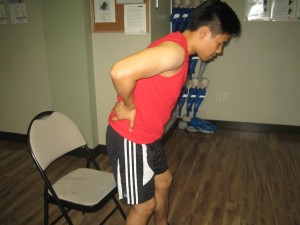It is important to note that the bacteria Mycobacterium tuberculosis has been the cause of tuberculosis. Even though tuberculosis primarily targets the lungs, it can also spread via the bloodstream to other parts of the body which is called as disseminated tuberculosis. The usual sites of disseminated tuberculosis include the conclusion of the elongated bones and the vertebrae. If you want to learn more about this type of tuberculosis, click here.
https://www.youtube.com/watch?v=xjV0tkxOEsI
Pain
Tuberculosis can affect any bone in the body but usually attacks the spine as well as the weight bearing joints. In most cases, the wrists, hands and elbows are usually affected especially if the individual sustained previous injuries. The level of pain will depend on the precise location of the tuberculosis.
Spinal tuberculosis or Pott’s disease typically affects the thoracic region of the spine, resulting to persistent back pain as the virus degrades the discs that cushion the vertebrae. If the disease affects the joints, it can cause stiffness and aching pain. As for tuberculous osteomyelitis, it can cause continuous pain in the bone and can lead to complications on the surrounding tissues particularly carpal tunnel syndrome.

Arthritis
Tuberculosis affecting the joints gradually destroys the joints in the knees or hips. In such cases, the doctor will call the condition as mono-arthritis since only a single joint is affected. Take note that the affected joint will swell and become painful. The movement is reduced while the range of motion is also affected. In severe cases, abscesses can develop in the involved joints.
Spinal hump
If spinal tuberculosis was left to progress to deterioration of the vertebrae and the discs, the bones in the spine will protrude forward. In such cases, the doctor can feel the displacement of the bones of the spine which forms a hump called as gibbus.
Paralysis
Always bear in mind that spinal tuberculosis has the tendency to spread from one vertebra to the next one if left untreated. It also involves the weakening of the bones as well as the destruction of the cushioning discs in between them. In severe cases, the spine can collapse which ends up pinching the spinal cord, causing the paralysis of the lower body.
What are the generalized symptoms?
Individuals with tuberculosis of the bones might or might not show any of the generalized symptoms of the disease such as fatigue, fever, unexplained weight loss and night sweats. Those who have spinal tuberculosis usually suffer from the generalized symptoms while those who have articular tuberculosis do not.
Even though half of individuals suffering from bone tuberculosis also have infected lungs, the disease is not active there. It simply means that most individuals with bone TB do not experience coughing and do not even suspect that they have the disease. Those who have bone TB are not contagious since the disease spreads via coughed up particles.
